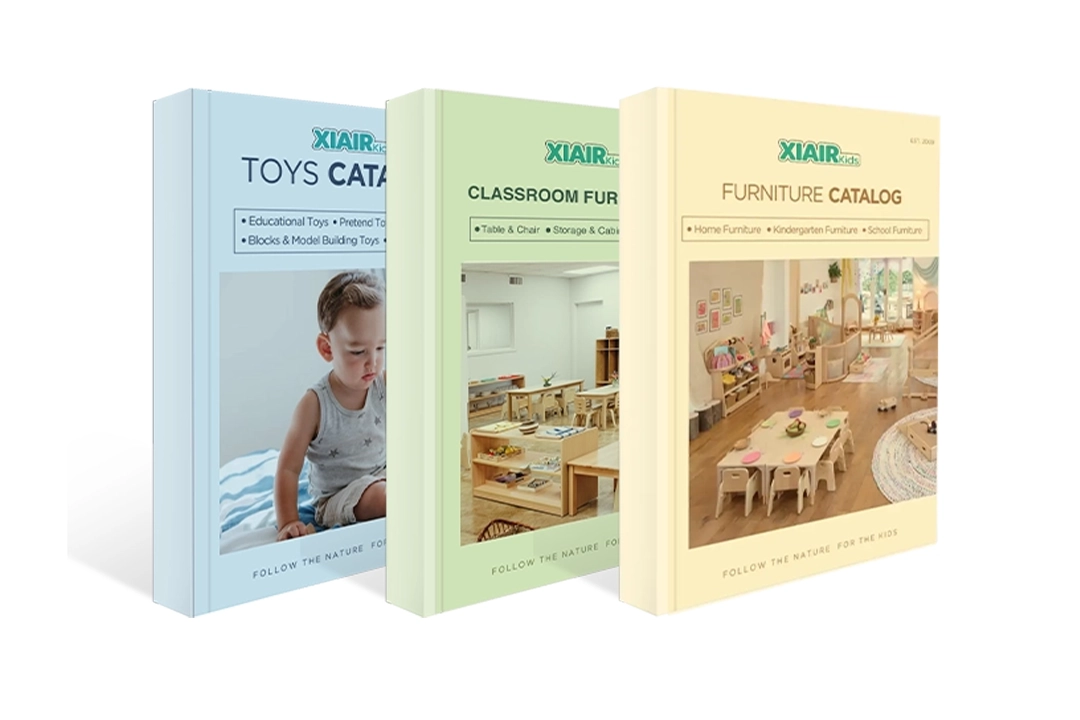Are you wondering how to teach kids teamwork without boring them with lectures or structured rules? Do you find it challenging to keep children engaged while teaching them how to cooperate, share, and communicate effectively in groups? What’s the best way to make teamwork exciting and natural for kids?
Teaching kids teamwork involves incorporating games, creative group projects, and real-life tasks, encouraging collaboration. These hands-on experiences help children develop communication, empathy, leadership, and conflict resolution skills in a fun way. More importantly, teamwork activities boost their self-confidence, improve their social skills, and prepare them for real-world challenges. By making learning feel like play, kids are likelier to stay motivated and absorb these lifelong skills effortlessly.
Want to discover playful, easy-to-apply ways to teach kids teamwork that make a difference? From interactive games to everyday routines, this guide breaks down fun and practical strategies that help children thrive as team players. Let’s dive into creative tools and proven techniques to build collaboration skills!
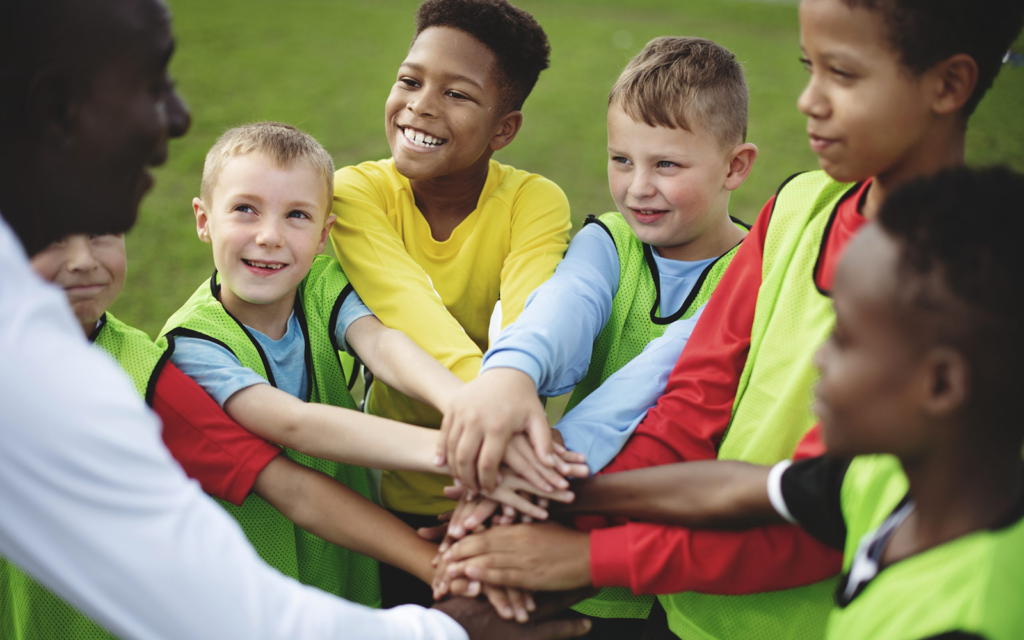
Benefits of Teaching Kids Teamwork Early
It’s never too soon to teach kids teamwork. Doing so from an early age shapes how they think, interact, and grow socially and academically. When children work together, they develop practical skills beyond the classroom. Let’s explore why teamwork is valuable and how it contributes to well-rounded child development.
Problem-Solving Skills
Teaching kids teamwork through structured play or classroom challenges helps them understand the value of collective thinking. Faced with puzzles or group-based assignments, they must weigh different options, assess possible solutions, and make decisions as a team. These early experiences of group problem-solving create a foundation for logical reasoning and resilience.
Instead of reacting impulsively, children learn to pause, consider others’ input, and form a consensus. This type of guided interaction builds both patience and persistence. Over time, teamwork strengthens their ability to think critically, a skill that will support them throughout life, from academia to the workforce.
Creative Thinking
Teaching kids teamwork helps spark creative thinking.
When children work together, they bounce ideas off one another. What starts as a simple idea can become a whole project. For instance, a group begins drawing a house. One child adds trees. Another suggests a story behind who lives there. Soon, they’ve built a whole narrative together.
This kind of layered creativity wouldn’t happen in isolation. Teamwork enables children to expand their thinking, stretch their imagination, and see possibilities beyond their view.

Verbal Communication Skills
One of the most apparent benefits of teaching kids teamwork is improving their expression. Children who frequently engage in team activities are naturally pushed to articulate their ideas, listen actively, and respond respectfully. It teaches them how to be heard while valuing the perspectives of others.
Kids practice using their voices in every group setting—in the classroom, on a sports field, or during a camp activity. They learn to give instructions, ask for clarification, and offer encouragement. These verbal skills help conflict resolution and foster emotional intelligence, which is as critical as academic achievement.
Resilience and Emotional Flexibility
Another powerful reason to teach kids teamwork early is that it cultivates emotional strength. No team works perfectly all the time. Children encounter setbacks, conflicts, and even failure in group settings. But instead of withdrawing, they learn to adapt, compromise, and try again. These experiences build emotional endurance.
Resilience also comes from learning that their worth isn’t defined by winning or being right, but by contributing and learning from others. Every child has a role in a team, and being part of a bigger whole encourages perseverance and self-reflection. These are invaluable traits, especially in today’s fast-paced and often competitive world.
Jangan hanya bermimpi, rancanglah! Mari kita bicarakan kebutuhan furnitur khusus Anda!
Deeper Friendships and Social Bonds
Children thrive on connection. Teaching kids teamwork promotes skill-building and strengthens bonds. Working together gives children a shared sense of purpose. Whether solving a group puzzle or building a class garden, their experiences create shared memories that foster genuine friendships.
These team-based friendships are rooted in mutual respect and collaboration, not just play. Children become more empathetic as they see others struggle and succeed. They learn to celebrate group achievements and comfort one another in setbacks. These deep, trust-based connections form the basis for long-lasting social health.
Self-Confidence
Teamwork builds trust, which in turn builds deeper friendships. When children experience success and failure together—when they laugh, create, clean up, and problem-solve side by side—they form lasting connections. Teaching kids teamwork means helping them form positive peer relationships that last beyond the activity itself.
This is especially true for children who struggle socially. Group play offers natural entry points for connection. Children can participate through actions and cooperation rather than relying solely on verbal communication. The result is a classroom where children don’t just play next to each other but truly play with each other.
Learning from Peers
A significant benefit of teamwork is peer learning. When you teach kids teamwork, you create natural opportunities for them to observe and emulate one another. Watching how a teammate handles frustration or explains a tricky concept offers more than academic knowledge—it also provides behavioral and emotional cues.
In this dynamic, kids don’t just passively receive information; they actively exchange it. They may teach each other new vocabulary, explain concepts in relatable ways, or introduce different methods for solving a problem. These exchanges accelerate understanding and create a richer, more inclusive learning experience.
Increased Classroom Community
Children need to feel that their voices matter. Teamwork nurtures this by giving every child a seat at the table. When adults teach kids teamwork with intention, they create space for all voices, not just the loudest or most assertive.
Being listened to enhances a child’s sense of identity and self-worth. It also teaches them that respect is mutual—that to be heard, they must also listen. These early lessons in mutual validation build trust and help children become compassionate communicators and confident contributors.
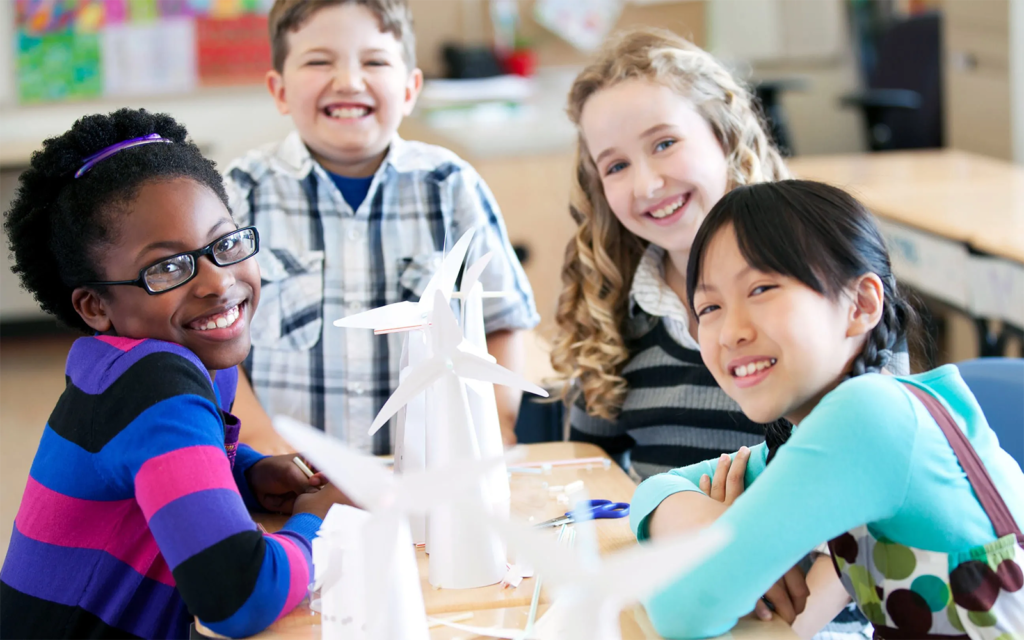
Feeling Heard and Respected
A classroom that embraces teamwork becomes a true community. When students consistently work together toward shared goals, barriers between them dissolve. They become more patient, cooperative, and inclusive. Teachers prioritizing teaching teamwork often report a drop in behavior issues and a rise in student engagement.
Strong classroom communities support academic success and emotional safety. Children are more willing to ask for help, share ideas, and support each other. Every child feels like they belong in this environment, which is essential for personal development and academic achievement.
Lead by Example
One of the most effective ways to teach kids teamwork is to model it. Children absorb what they observe. When adults collaborate effectively—whether co-teaching a lesson, volunteering together, or discussing plans calmly—kids internalize those behaviors.
This modeling shows that children’s teamwork is a life skill, not just a classroom strategy. It teaches them that respect, flexibility, and cooperation are valuable in every setting, from family life to future workplaces. By seeing these values in action, children are more likely to practice them in their interactions.
Play to Win
Playing Games Together at Recess
Kids’ teamwork doesn’t mean eliminating competition—it means redefining it. In team-based games, winning is about achieving a goal together. Whether it’s a relay race or a class debate, children learn that effort, encouragement, and collaboration are as significant as the final score.
These activities also teach strategic thinking and accountability. Each child learns their big or small role matters to the team’s success. This helps build pride in their contributions and reinforces that success is a shared accomplishment, not an individual trophy.

Get Involved
For teamwork to stick, adults must engage. Whether it’s a teacher facilitating group discussions or a parent helping organize a neighborhood cleanup, involvement reinforces the value of collaboration. Children who see adults invested in team-based activities take those experiences more seriously.
Being actively involved also allows adults to guide interactions, offer feedback, and celebrate milestones. This support system enhances the effectiveness of teamwork instruction and builds a positive culture around cooperation. It teaches kids that teamwork is not just an activity—it’s a way of life.
Ruang kelas impian Anda hanya tinggal satu klik saja!
What Does Teamwork Look Like in the Classroom?
To successfully teach kids teamwork, it is essential first to understand what effective teamwork looks like in a real-world classroom setting. Teamwork is not just about assigning group work—it is about building a cooperative culture where students support one another, work toward shared goals, and understand the value of every team member’s contribution.
In an environment that prioritizes collaboration, teamwork manifests in various practical ways, from group projects to daily routines. Children learn the nuances of cooperation, compromise, and community within these moments, both structured and spontaneous. Let’s explore several key examples that illustrate how to teach kids teamwork naturally through everyday classroom experiences.
Working Collaboratively to Complete a Project
Group projects are one of the most direct ways to teach kids teamwork. Whether students are researching a science topic, creating a class mural, or writing a group story, these activities require shared responsibility. Each student brings their strengths to the table—some may take on organizing tasks, while others contribute creativity or leadership.
What makes group projects powerful is the combination of individual roles and shared outcomes. Children must learn to listen, divide responsibilities, compromise on creative direction, and support one another through challenges. When a team completes a project, the final product reflects their combined effort and decision-making.
Teachers can reinforce teamwork by assigning clear roles within the group and rotating them across different projects. For example, in one assignment, a student might act as the group leader; in the next, they may serve as the researcher or timekeeper. This variety helps children understand that every role is essential and gives them confidence in multiple skill areas.
Additionally, collaborative projects teach accountability. If one student neglects their part, the group is affected. This natural consequence helps kids realize teamwork involves reliability and communication, not just participation.

Sharing Resources During Small Group Time
Teamwork can also be fostered through resource sharing during small group activities. Whether it’s passing around math manipulatives, using shared art supplies, or collaborating on a reading exercise, students learn to balance their own needs with the needs of others.
These interactions may seem minor, but they are rich with daily opportunities to teach kids teamwork. When children are encouraged to wait their turn, share fairly, and help each other understand the materials, they practice fundamental aspects of collaboration.
Teachers can reinforce this by setting clear expectations around shared resources. For instance, introducing rotating roles, such as “material manager” or “instruction reader,” can provide structure and ensure everyone contributes. This keeps the group organized and instills a sense of responsibility in each student.
By engaging in these small but significant acts of cooperation, children begin to internalize that being part of a team means looking out for each other, allowing everyone to participate, and contributing to a shared success.

Playing Together During Centers
Learning centers are designed to encourage exploration and choice, but offer a natural setting to teach kids teamwork. Students must interact with peers to make shared play successful, whether it’s a dramatic play center, building blocks, or a pretend grocery store.
In these settings, children often solve social challenges without adult intervention. Who gets to be the cashier? What happens when two kids want the same toy? These small negotiations teach compromise, assertiveness, and fairness—all essential to effective teamwork.
To encourage collaboration, educators can design center activities that require partnership. For example, students might be challenged to construct a tower as a team at a building center, with each child contributing a part of the design. Two students could co-author a story using a shared prompt in a writing station. These activities promote joint ownership and build the idea that working together leads to better outcomes.
Over time, students begin to internalize cooperative norms. They start asking peers to join them in play, offering help, and creating group games. This organic teamwork lays the foundation for more formal group work as they advance in school.

Playing Games Together at Recess
Recess may seem unstructured, but it’s one of the most effective times to teach kids teamwork through experience. Team games like soccer, basketball, or even informal tag games require communication, strategy, and cooperation.
Unlike structured classroom activities, playground interactions are peer-directed. This allows children to self-organize, solve disputes, and establish fair play rules. These interactions are rich with lessons about leadership, fairness, and empathy. For example, if one student dominates a game or changes the rules mid-play, others may protest or disengage. These social consequences help children understand the value of inclusive and respectful teamwork.
Teachers and school staff can support this development by introducing new group games during recess that emphasize collaboration over competition. Games like relay races, obstacle courses, or cooperative challenges (such as safely building a team “human pyramid”) can build cohesion.
Recess is also a key time to teach kids that teamwork includes emotional support. If a child falls or gets upset, peers often rush to help. These acts of kindness reinforce the message that being a good teammate isn’t just about performance—it’s also about caring for one another.
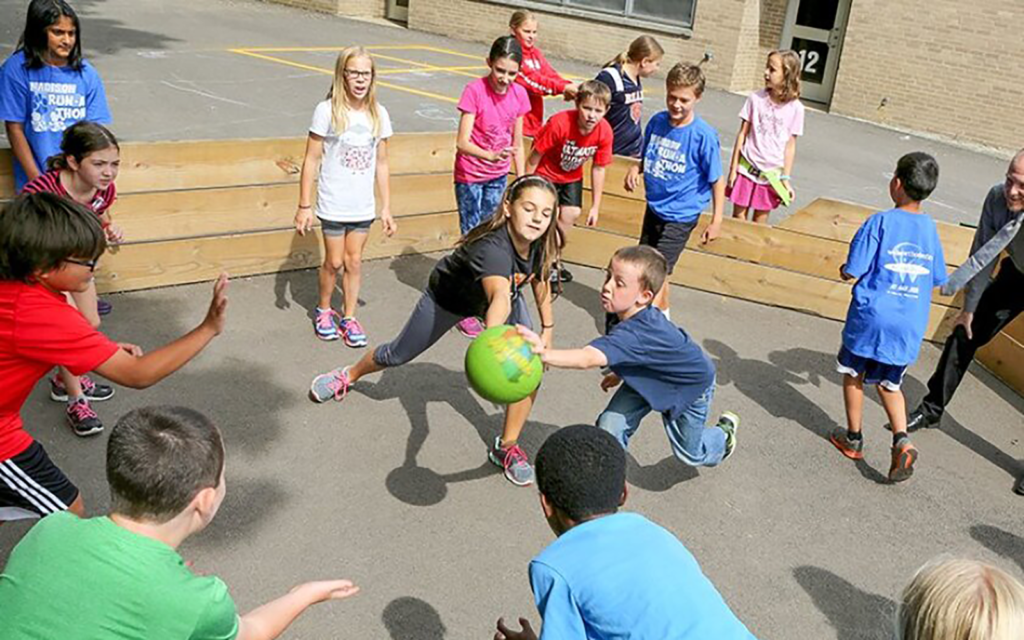
Everyone Completing Classroom Responsibilities at the End of the Day
Teamwork doesn’t end when the lesson does. Daily classroom routines offer some of the most consistent opportunities to instill collaboration. Whether cleaning up art supplies, organizing books, or straightening chairs, shared responsibilities help students understand that maintaining a shared space is a team effort.
These routines may seem mundane, but they carry weight. When a group of students sees their peers pitching in to tidy up, they feel encouraged to do the same. Over time, this builds a classroom culture of mutual respect and collective responsibility.
Teachers can rotate cleanup roles weekly to ensure equity and allow every child to experience different tasks. They can also celebrate teamwork by acknowledging how well the class worked together to prepare the room for the next day. Phrases like “Great teamwork today, everyone!” reinforce positive behaviors and build pride in group accomplishments.
Moreover, these routines prepare children for real-world collaboration. Just like adults must contribute to workplace culture or household duties, children learn that being part of a community means doing their share, even when the task is small or repetitive.
Ruang kelas impian Anda hanya tinggal satu klik saja!
How to Teach Kids Teamwork Through Fun, Daily Activities at School?
Consistency, creativity, and connection are the keys to truly teaching kids teamwork. Teamwork isn’t just a theoretical concept taught in lectures or once-a-semester group projects—it must be an integrated, enjoyable part of daily school life. Through carefully designed activities, children can learn how to cooperate, resolve conflicts, communicate, and support each other—all while having fun.
Creating daily rituals and engaging classroom activities centered around teamwork can help normalize collaboration and ensure students view it as a rewarding, natural part of their learning environment. Below, we explore icebreakers and indoor team-building activities that foster these crucial social skills.
Icebreaker Team Building Activities
Icebreakers are short, engaging activities that help children become more comfortable with each other. They’re also perfect opportunities to teach kids teamwork in a low-pressure, high-fun environment. These activities are beneficial at the beginning of the school year, during class transitions, or when forming new groups.
Birthday Lineup
This classic nonverbal game requires children to arrange themselves in order of their birthdays—from January to December—without speaking. They must use gestures, hold up fingers, or find creative ways to communicate the month and date.
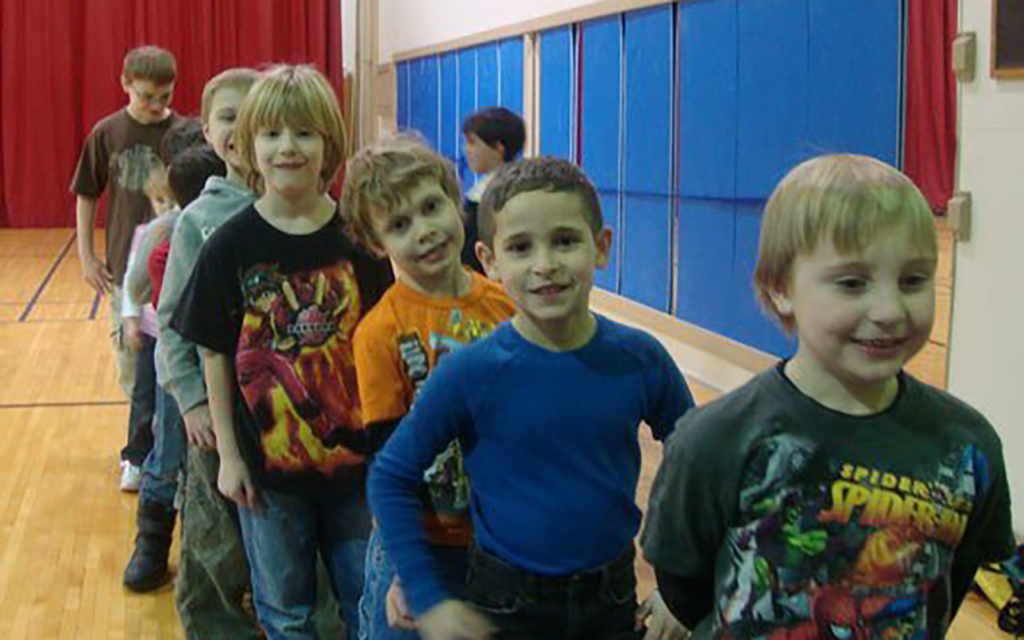
What makes it effective:
Children must work toward a common goal using only non-verbal cues. The task feels like a puzzle, and everyone is equally involved. No one can complete the lineup alone, making it a natural exercise in group problem-solving.
Why it works for teamwork:
It encourages children to consider others’ ideas and find ways to express themselves without dominating the group. It also teaches cooperation without conflict and encourages nonverbal leadership.
Reflection questions:
- “How did you figure out who goes where?”
- “Did you feel heard, even without speaking?”
- “What helped your group work best together?”
Caterpillar Race
In this movement-based game, children stand in a line, gently holding onto the shoulders of the person in front of them. They must walk in sync from one side of the room to the other without breaking the line or stepping out of rhythm.

What makes it effective:
It’s fun and physical, but success depends entirely on coordination and listening. The whole line wobbles or collapses if even one child steps too fast or too slow.
Why it works for teamwork:
The game teaches that in teamwork, your actions affect the group. Children must observe each other, communicate, and adjust their pace, developing real-time collaboration skills.
Reflection questions:
- “Was it easy to move as a group?”
- “What helped you stay connected?”
- “How did you fix it when the line got off track?”
Storytime Collaboration
Children sit in a circle. One child starts a story with a sentence, and each child adds one line at a time. The goal is to build one continuous story from start to finish.
What makes it effective:
Children build something together through listening, memory, and imagination. There’s no competition—only contribution.
Why it works for teamwork:
It teaches turn-taking, active listening, and creative trust. Children learn to respect others’ ideas and add to them, not override them. It’s a subtle but powerful way to teach kids teamwork through language.
Reflection questions:
- “How did your part help move the story forward?”
- “Was it hard to wait for your turn?”
- “How did you feel when your idea was used?”
Common Denominator
Children are invited to walk around the room and find classmates who share something in common with them, such as a favorite color, pet, snack, or toy. Once they find a common trait, they form a group and share with the class.

What makes it effective:
It turns social connection into a discovery game. Children begin by noticing others, asking questions, and forming bonds based on shared identity.
Why it works for teamwork:
Teamwork begins with empathy and awareness. This activity helps children notice others, find similarities, and build informal peer relationships—all critical before any structured teamwork can succeed.
Reflection questions:
- “How did you feel finding someone like you?”
- “What was hard about finding a match?”
- “What surprised you about your classmates?”
Jangan hanya bermimpi, rancanglah! Mari kita bicarakan kebutuhan furnitur khusus Anda!
Indoor Team Building Activities
Indoor team-building challenges offer structure, strategy, and deeper collaboration opportunities. With the proper setup and intention, these games are not just fun but micro-lessons in leadership, flexibility, and perseverance.
Cup Stacking Challenge
Children are divided into teams. Each team is given six plastic cups, one rubber band, and four to five strings tied to the rubber band. Each child holds a string and works together to stack the cups into a tower, using only the band.

What makes it effective:
It looks easy, but requires patience, coordination, and real-time group strategy. No one can dominate; success comes from harmony.
Why it works for teamwork:
Children must communicate clearly and respond to the group’s rhythm. It’s an ideal exercise in balanced contribution and shared success.
Reflection questions:
- “How did you make sure everyone worked together?”
- “Did your first idea work? Why or why not?”
- “What did your team do when things got frustrating?”
Marshmallow and Toothpick Challenge
Children use only marshmallows and toothpicks in small groups to build the tallest, most stable structure possible.

What makes it effective:
This STEAM-inspired challenge taps into creative planning, but the real test is teamwork under pressure.
Why it works for teamwork:
It encourages children to delegate roles, test ideas, and learn from failed attempts. It teaches flexibility, patience, and group-based success over perfection.
Reflection questions:
- “How did you decide what to build?”
- “What did you learn from a mistake?”
- “Did you listen to each person’s idea?”
Human Knot
Children stand in a circle and grab each other’s hands from opposite sides. The group must then untangle itself without letting go.
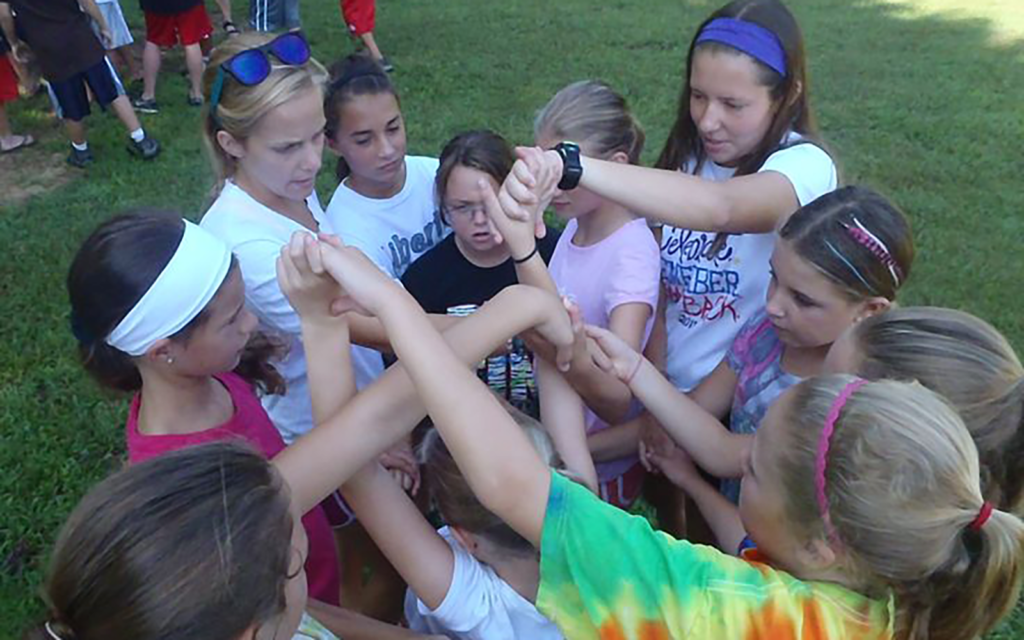
What makes it effective:
It creates fun chaos—and requires everyone’s attention, communication, and movement. Success comes from patience and cooperation.
Why it works for teamwork:
The only way out is together. Children learn that teamwork isn’t always quick or clean, but it always gets there faster when everyone participates.
Reflection questions:
- “What helped your group untangle faster?”
- “Did anyone lead or follow? How did that feel?”
- “What did you do when you got stuck?”
Hula Hoop Fingers
A group of 6–8 children places one finger under a lightweight hula hoop. Their task is to lower the hoop to the floor without losing contact with their fingers.

What makes it effective:
It’s more complicated than it sounds. The hoop often rises instead of falling. This leads to giggles—but also to serious collaboration.
Why it works for teamwork:
It builds concentration, rhythm, and real-time feedback. It’s a metaphor: the system fails when one child pushes too hard, but it works when they align.
Reflection questions:
- “Why did the hoop go up instead of down?”
- “How did you change your approach as a group?”
- “Did everyone feel part of the success?”
Jangan hanya bermimpi, rancanglah! Mari kita bicarakan kebutuhan furnitur khusus Anda!
Outdoor Activities for Team Building
Outdoor activities are ideal for active learners who thrive on movement, spontaneity, and energy. These team-based games can be used during recess, physical education, or even morning meetings in the courtyard. Each game introduces physical coordination with communication and group goal-setting—ideal ingredients to teach kids teamwork through play.
Chuck the Chicken
This hilarious game involves one team trying to throw or “chuck” a rubber chicken as far as possible while the other team races to retrieve it, line up, and pass it over and under their bodies. The goal is to work quickly and in sync before the other team scores.

What makes it effective:
There’s chaos, laughter, and excitement—but a deep need for coordination and cooperation is hidden. Teams must move together, cheer one another on, and react quickly.
Why it works for teamwork:
It’s a perfect way to teach kids teamwork. By creating a shared goal with time pressure, children learn that helping the slowest teammate or passing correctly is more important than individual speed.
Reflection questions:
- “What helped your team work faster?”
- “Was it harder to go over or under? How did you help each other?”
- “How did your team improve with each round?”
Tug-of-War
A classic test of group strength and coordination, Tug-of-War pits two teams against each other in a simple contest: pull the rope until one side wins. But there’s more here than just strength.

What makes it effective:
To win, teams must align their movement, communicate, and pull together, not individually. This forces even the youngest kids to feel what unity means physically.
Why it works for teamwork:
It teaches rhythm, group timing, and trust. It’s also a lesson in how team success relies on every member’s participation, not just the biggest or strongest.
Reflection questions:
- “How did you decide when to pull?”
- “What happened when your team didn’t work together?”
- “How did it feel to win—or lose—as a team?”
Hula Hoop Pass
Children form a large circle and hold hands. One hula hoop is placed between two children, and the goal is to pass the hoop around the entire circle, without letting go of hands.

What makes it effective:
It requires full-body cooperation, patience, and laughter. Success depends on communication, flexibility, and rhythm.
Why it works for teamwork:
This activity is excellent for helping children develop body awareness while staying connected to others. It’s one of the most fun ways to teach kids teamwork using movement and laughter.
Reflection questions:
- “What did you do when the hoop got stuck?”
- “How did you help others get through the hoop?”
- “What made the hoop go faster around the circle?”
Group Jump Rope
In this game, multiple children jump into a large jump rope while two others swing it. The goal is to keep the rope turning and see how many children can jump successfully together without stopping.
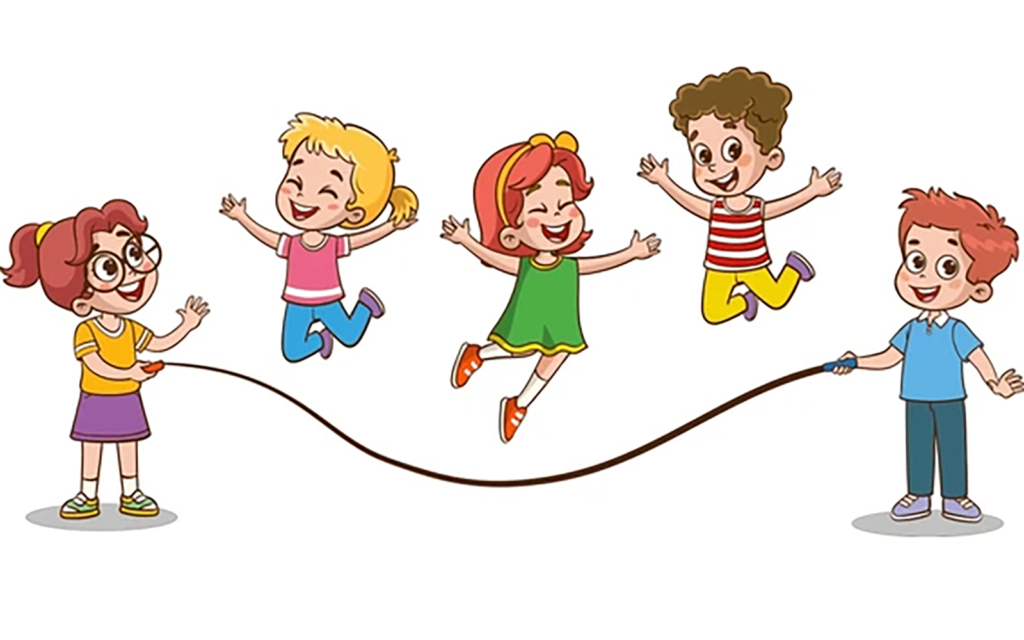
What makes it effective:
Jumping in time is already difficult. Doing it together without disrupting the group rhythm teaches patience and peer awareness.
Why it works for teamwork:
The game naturally encourages timing, encouragement, and careful observation. Children learn to read each other’s signals and adjust in real time—exactly what teamwork demands.
Reflection questions:
- “How did you decide when to jump in?”
- “What helped you stay in sync with your group?”
- “How did your team react to mistakes?”
Obstacle Course
Set up a course with cones, tunnels, climbing mats, or balance beams. Children can complete the course individually, but with a twist—they must help one another along the way.

What makes it effective:
It turns physical play into a problem-solving task. By working in pairs or small teams, children learn to support each other.
Why it works for teamwork:
Children aren’t just racing—they’re coaching, helping, and guiding. This is a great way to teach empathy, observation, and responsibility for others.
Reflection questions:
- “How did you help your partner through the course?”
- “What was your role in the team?”
- “What did you feel proud of?”
Jangan hanya bermimpi, rancanglah! Mari kita bicarakan kebutuhan furnitur khusus Anda!
Strategic Team Building Games
While outdoor games focus on movement and energy, strategic team-building games promote planning, thinking, and goal alignment. These are ideal for classroom environments or mixed indoor-outdoor time, especially for kindergartens using Montessori or Reggio-inspired learning frameworks.
Scavenger Hunt
Create a themed scavenger hunt where children work together to find hidden objects around the classroom or playground. Each clue requires a different skill, such as counting, observing, or decoding a message.
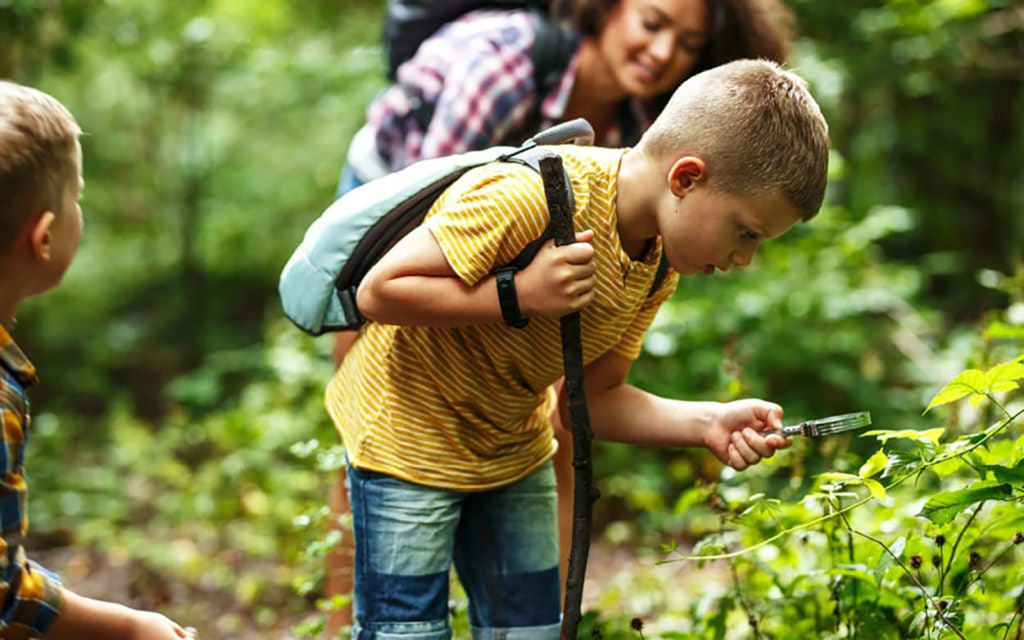
What makes it effective:
Each child contributes a different strength. The hunt only works if the group follows the clues together.
Why it works for teamwork:
It teaches children to value each person’s input, share decision-making, and celebrate success collectively. It’s also an excellent opportunity for natural leaders to emerge—and for others to feel safe following.
Reflection questions:
- “Which part of the hunt did your team do best?”
- “Did everyone have a role?”
- “How did you decide which clue to follow first?”
Build as a Team
Provide a mix of blocks, cardboard, or recyclable materials and assign tasks like “Build a bridge that holds a book” or “Design a house for animals.” Teams must plan, test, and adjust.

What makes it effective:
It requires creativity and cooperation, not just construction skills. Each choice affects the whole structure and team.
Why it works for teamwork:
This challenge directly connects to engineering, problem-solving, and compromise. Children must collaborate deeply—listening, leading, and responding to changes together.
Reflection questions:
- “What was hard about working together?”
- “How did your team decide what to build?”
- “What would you do differently next time?”
Ruang kelas impian Anda hanya tinggal satu klik saja!
Tips for Teaching Kids Teamwork to Different Age Groups
Teaching kids teamwork requires more than simply placing them in groups—it demands age-appropriate strategies tailored to their developmental stages. Whether you’re guiding preschoolers, elementary students, or tweens, understanding how to teach kids teamwork effectively means adapting your methods to meet their emotional, cognitive, and social maturity. Below is a breakdown of best practices by age group, providing practical guidance for educators and parents alike.
Strategies for Preschoolers
Preschool is the foundation for emotional intelligence, communication, and cooperative behavior. If we want to teach kids teamwork successfully in later years, we must begin here with the basics of social interaction and shared responsibility.
Encourage Parallel Play with a Purpose
Children aged 3–5 still develop their ability to play with others instead of next to them. That’s why much early teamwork begins with guided parallel play—side-by-side activities where natural collaboration emerges.
How does it help to teach kids teamwork?
Parallel play builds trust. As children see each other mimic or extend their ideas (e.g., building similar towers or painting next to each other), they begin to understand shared creativity. Over time, this blossoms into cooperative problem-solving.

Use Simple, Inclusive Language
In every instruction, use the word “we.” Say, “We clean up together,” or “Let’s build this puzzle as a team.” Constant repetition helps children internalize that school is a shared space, and their efforts affect others.
Why it matters:
Language drives identity. When we use collaborative phrases daily, we subtly and repeatedly teach kids teamwork as a way of being, not just a school subject.
Keep Group Sizes Small and Roles Simple
Limit group sizes to 2–4 children. Use fundamental roles like “material helper” or “idea sharer” during tasks like setting the table, sorting toys, or storytelling.
How it supports teamwork:
Small groups reduce social overwhelm. When expectations are clear and tasks manageable, children are more likely to step up and try contributing—even if they’re shy or new.
Approaches for Elementary Students
When children reach elementary school, they are entering a stage of greater cognitive development, increased verbal skills, and stronger emotional awareness. This makes it an ideal age to introduce more structured and intentional ways to teach kids teamwork. However, it also means educators must be deliberate about setting expectations, balancing personalities, and creating systems that foster shared ownership, not just task completion.
Assign Clear and Rotating Roles in Group Activities
Use rotating roles such as “leader,” “recorder,” “timekeeper,” or “checker.” This helps divide responsibilities evenly.
How does it help to teach kids teamwork?
It prevents one child from taking over and gives quieter students a defined way to participate. Over time, students understand that every role is valuable, and all contribute to group success.
Introduce Goal-Setting and Group Planning
Let teams write a quick group plan before they start a project. Ask questions like: “What’s our goal?” “What are the steps?” “Who is doing what?”
Use Visual Progress Trackers
Why it works:
This approach reinforces structure. By learning how to plan as a team, children take pride in the final product and how they got there, which is one of the most important lessons when teaching kids teamwork.
Track group collaboration with simple charts, team point systems, or group rubrics.
Why it’s effective:
When children see teamwork as a visible, rewarded behavior, they become more mindful of how they treat peers, solve problems, and support the team.

Adapting for Tweens and Pre-teens
Older children come with more social awareness, critical thinking, and emotional sensitivity. At this age, we must shift from managing behavior to mentoring collaboration and preparing students for real-world teamwork.
Use Real-World Group Projects
Challenge them with long-term tasks like organizing a class event, designing a game, or solving a real-life problem (e.g., recycling systems for the classroom).
How does it help to teach kids teamwork?
These projects require proper delegation, compromise, and long-range planning. They simulate adult-style collaboration, giving students firsthand experience balancing independence and interdependence.
Facilitate Structured Peer Reflection
After each group task, create a system for reflection, such as group journals, guided discussion, or feedback forms.
Why this works:
It makes collaboration visible and intentional. Reflection also teaches accountability, which is crucial for teams that want to improve.
Support Emotional Safety and Boundaries
Middle-grade students are deeply affected by peer pressure. Establish norms for listening, respecting boundaries, and affirming ideas to ensure emotionally safe group dynamics.
Why it’s critical:
Without emotional safety, teamwork becomes dominated. A supportive structure ensures that we teach kids teamwork in a way that builds mutual respect, not just task completion.
Ruang kelas impian Anda hanya tinggal satu klik saja!
Common Challenges in Teaching Kids Teamwork—And How to Solve Them
Even with the best systems, teamwork can fail if educators don’t anticipate common group dynamics. Below are the top challenges we hear from our school clients—and the most effective solutions we recommend.
Shy or Dominating Personalities
Challenge:
Some students are reluctant to contribute, while others dominate group discussions and decisions.
Solution:
- Use assigned speaking turns and timers during group talks.
- Assign equal-length roles like “idea generator,” “question asker,” “listener,” and “presenter.”
- Praise balanced teams, not just individual stars.
Teaching kids teamwork requires balancing confidence and humility. The goal isn’t to silence leaders, but to raise the voices of quieter students until all are heard.
Disagreements and Group Conflict
Challenge:
Children argue, interrupt, or reject ideas, often derailing the group task.
Solution:
- Use classroom norms like “One mic at a time” or “Disagree respectfully.”
- Teach sentence starters like “I see it differently because…”
- Model resolving conflict with group role-play.
Why it matters:
You can’t teach kids teamwork without teaching them how to handle disagreement. Conflict isn’t the enemy—it’s the classroom for emotional maturity.
Unbalanced Workload in Groups
Challenge:
Some students carry the team, while others coast or disengage.
Solution:
- Use team contracts where students agree on who does what.
- Add a “self and peer” evaluation sheet at the end of group projects.
- Make sure quieter strengths—like organizing materials—are also recognized.
Teaching kids teamwork means helping them understand fairness. That includes both speaking up Dan stepping back when needed.
Lack of Engagement or Motivation
Challenge:
Some children don’t care about the task and disconnect from the team.
Solution:
- Offer choice in tasks to build ownership.
- Add gamified or real-world stakes to projects.
- Use visual progress tools (e.g., “team goal meters”) to create momentum.
When you want to teach kids teamwork, you have to spark purpose. Children commit to what they feel matters.
Ruang kelas impian Anda hanya tinggal satu klik saja!
Tanya Jawab Umum
1. What is the best age to start teaching kids teamwork?
The best time to teach kids teamwork is during the preschool years (ages 3–5), when children are just beginning to explore social interaction. At this stage, teamwork is taught through guided play, shared tasks, and parallel play that encourages cooperative behavior. Starting early builds the emotional and communication foundation needed for more advanced teamwork in later years.
2. How can I prevent one child from doing all the work in group projects?
To prevent unbalanced group work, assign specific rotating roles (like leader, timekeeper, recorder) and introduce group reflection tools such as peer evaluations or self-assessments. These systems hold each child accountable while promoting the idea that every role has equal value. It’s one of the most effective ways to teach teamwork fairly and consistently in elementary and middle school settings.
3. How do I support shy or quiet students in team activities?
Shy students thrive in small, consistent groups with clearly defined responsibilities. To teach kids teamwork inclusively, provide structured turn-taking systems, offer sentence starters for peer feedback, and avoid significant group dominance by rotating leadership. Classrooms that build psychological safety and equitable participation help all students develop confidence within teams.
4. What are some practical tools to help teach teamwork in the classroom?
Practical tools include:
- Teamwork role cards
- Group planning templates
- Peer feedback sentence stems
- Visual teamwork trackers (charts or sticker boards)
- Team reflection journals
Pairing these tools with collaborative furniture layouts (such as group tables and shared supply zones) creates an environment where it’s easier and more natural to teach kids teamwork consistently across different activities.
5. How should teamwork teaching change as children grow older?
As children grow, the way we teach kids teamwork should evolve:
- Preschool: Focus on emotional sharing, parallel play, and basic cooperation
- Elementary: Introduce role assignment, group planning, and structured reflection
- Tweens/Pre-teens: Shift toward autonomy, real-world projects, peer-led discussion, and emotional safety
Scaffolding must match cognitive, emotional, and social development at each stage, ensuring that teamwork is age-appropriate and impactful.
Kesimpulan
To truly teach kids teamwork, we must go beyond assigning group tasks—we must intentionally shape environments, routines, and interactions that nurture collaboration. From preschoolers learning to share during play to tweens navigating complex group dynamics, every age group benefits from tailored strategies. When we provide structure, reflection, and emotional support, teamwork becomes more than a skill—it becomes a habit. With the right tools, space, and mindset, every classroom can become a place where children grow as learners and teammates.



